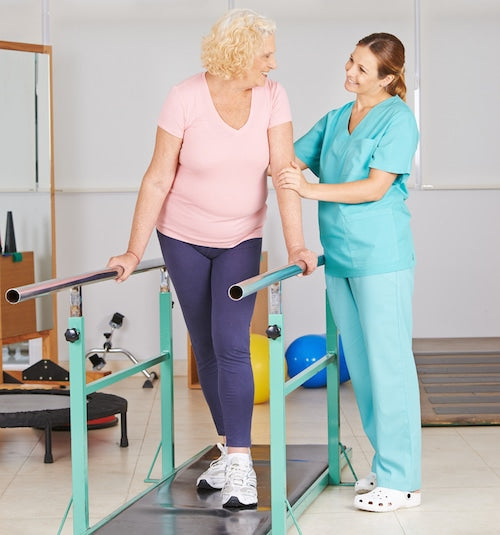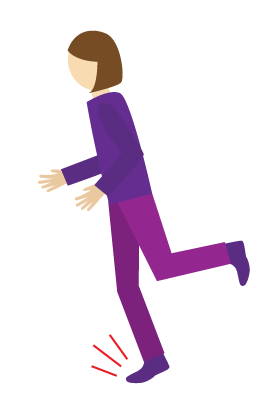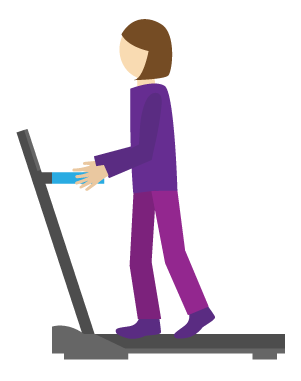The Benefits of Gait Training During Stroke Recovery


In the challenging months following a stroke, the first line of defense against further illness or injury is a strong rehabilitation plan. Long-term stroke recuperation is quite common—up to 90 percent of stroke patients develop some form of ongoing symptoms. And since strokes often trigger a range of mobility impairments, full independence can be significantly delayed. But if mobility constraints are properly treated, the effects will have a significant impact on a patient’s quality of life, cardiovascular health, and the probability of early diagnosis of ongoing issues.
Gait training, or the process of analyzing and reorienting a patient’s walking abilities, continues to be one of the top tools for regaining full health, both neurologically and physically. This constraint-induced movement therapy is a dynamic process that can be tailored to each patient’s needs and capabilities and remains a crucial element of rehabilitation.
What is Gait Training?
The process of gait training involves a combination of skill-strengthening exercises, mainly focusing on balance, weight-bearing abilities, and aerobic tasks such as repetitive or long-distance stretches of walking. Patients are often drawn to this type of practice after joint replacements, amputations, and spinal cord injuries, but stroke patients benefit significantly from its full-body advantages as well.
Gait training can improve endurance, posture, and muscular health, all of which prevent several of the common obstacles to regaining independence from cropping up. Neurologically, long-term practice of gait training’s repetitive motions will also strengthen the nerves damaged during the stroke, decreasing spasticity and weakness in crucial areas of the body.
Examples and Explanations
In this clip, a patient who has recently suffered a stroke exhibits several typical gait abnormalities, including circular motion in one leg, a sign of an upper motor neuron dysfunction.
This video features a thorough breakdown of gait training. The speaker explains the essential portions of a healthy gait cycle, which acts as a starting point for understanding training. He lists specific instructions for working with a patient’s gait patterns, including physical details to look out for and how to instruct changes. He asks several participants to demonstrate their natural gait and lists his observations. He then instructs how a therapist should proceed with analysis. In the second portion of the film, he reviews common gait abnormalities, their causes, and how to address their rehabilitation.
Why is Gait Training Necessary?

Walking endurance continues to be one of the more challenging obstacles of many post-stroke patients. Though nearly 85 percent of stroke patients learn to walk during their immediate post-rehabilitation process, complications with and abnormalities in a patient’s gait often remain, leading to related muscular and neurological issues. Discovering these abnormalities is instrumental in catching remaining health issues or neurological injuries.
Increasing a patient’s ambulatory abilities not only rebuilds muscle mass, but is also known to improve bone density, therefore preventing osteoporosis. A wider range of movement also improves circulatory and internal organ function.
Clearly, a patient must be at a point in their recovery where this type of exertion is safe and ideal for their situation. The Six-Minute-Walk Test (6MWT) has been used to diagnose the level of independence a patient is ready to take on.
Defense Against Falls

Several stroke side effects contribute to the risk of falls in the home, especially as a patient regains independence and spends more time without daily support. Muscular atrophy, slow reflexes, loss of balance, cognitive changes, and vision impairment are just a few factors that may lead to these complications.
Gait training is one of the best defenses against these falls. It emphasizes motor function–improving exercises for muscle support, as well as balance and equilibrium training, which allows patients to readapt to old spaces and new obstacles. When working with a patient, it is important to document the occurrence of falls and adjust the necessary use of gait training going forward.
Foot drop can also add to an increased risk for falls after a stroke. Foot drop is the inability to lift the front part of the foot due to weakness or paralysis of the muscles that lift it. The toes will drag on the ground when walking which can lead to falling. The SaeboStep can provide the support your foot needs to make gait training more effective and safe.
What Gait Training Looks Like

Gait training is a versatile, yet straightforward process that can be completed over time. Treadmill training, with or without an added support system, contributes to body-weight-bearing capacities, balance confidence, and walking-speed improvement. Several studies found that treadmill training increased the gait speed of patients throughout therapy and that the pairing of treadmill training with alternative methods is ideal for maximum progress. Treadmill training allows therapists to observe oxygen uptake, a crucial measurement for cardiovascular health.
Repetitive-mobility-training exercises are commonly paired with treadmill training, and they focus on small, pedestrian movements one at a time. These may include shifting body weight from one leg to the next, rising from a chair and sitting back down, riding a stationary bicycle, or moving through a space to avoid simple obstacles. These basic activities promote equilibrium, posture, and individual muscle reinforcement.
What’s New in Gait Training

(source: LiteGate)
In contrast to common practices of the past—when a therapist would only follow a patient through parallel bars—partial weight-bearing equipment is now changing the game. With the assistance of harnesses and suspension apparatuses, therapists are able to focus more closely on the patient’s body position during early movements. This relieves physical and psychological pressure from both the patient and therapist, allowing for a more manageable healing process and session.
In some systems, robotic equipment even detects movements in the patient’s body, making up for sudden changes and imbalances and adding support where it’s needed. These products can often hold up to 90 percent of a person’s body weight.
Additionally, MEDRythmns, a rehabilitation company based in Boston, is paving the way for music-based healing integration. By playing a piece of music or by pounding a specific beat, therapists lead patients to find their natural gait in the music, engaging a part of their brain that translates the music to movement. Neurological Music Therapy as a whole is making great strides toward speeding up the healing process in a range of patients, especially for stroke sufferers.
Taking it One Step at a Time
Ample and diverse research on gait training shows that this dynamic training is an encouraging and significant step toward stroke recovery. In order to set up the optimal situation for healing patients, it is necessary to improve their walking abilities, which will open the door to their independence, maintained health, and confidence in their futures.
All content provided on this blog is for informational purposes only and is not intended to be a substitute for professional medical advice, diagnosis, or treatment. Always seek the advice of your physician or other qualified health provider with any questions you may have regarding a medical condition. If you think you may have a medical emergency, call your doctor or 911 immediately. Reliance on any information provided by the Saebo website is solely at your own risk.
All content provided on this blog is for informational purposes only and is not intended to be a substitute for professional medical advice, diagnosis, or treatment. Always seek the advice of your physician or other qualified health providers with any questions you may have regarding a medical condition. If you think you may have a medical emergency, call your doctor or 911 immediately. Reliance on any information provided by the Saebo website is solely at your own risk.



